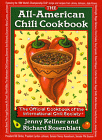
Military Leaders Sample, Rate New Field Rations
By Tech. Sgt. Lee Roberts, USAF
WASHINGTON -- Some of the military's highest-ranking officers assembled in the National Military Command Center at the Pentagon Sept. 10 for an unusual early-morning snack.
The leaders, including Gen. Henry H. Shelton, chairman of the Joint Chiefs of Staff, entered a serving line, but not for croissants, bagels, pastries, coffee and assorted fresh-squeezed juices. Their makeshift "chow" line led to a buffet of the 24 entrees now available in Meal, Ready-to-Eat field-ration packets.
Gerald Darsch, project director for the Department of Defense Food Program, and several other officials from the U.S. Army Soldier Systems Command in Natick, Mass., served samples and answered questions.
Darsch explained to the group that since 1993, more than 70 items were introduced into MREs, including 12 new entrees. At the same time, freeze-dried foods and many other items were deleted because soldiers, sailors, airmen and Marines in the field said they simply didn't like them.
"Our intent is to get the acceptability high, the consumption level high, to ensure we're giving the warrior the fuel he or she needs to operate the most technical weapon systems in the world," Darsch said. "I'm not going to claim that Meal, Ready-to-Eat entrees, in spite of drastic improvements, are better than mom's home cooking. But if a MRE doesn't taste good, chances are that it won't be eaten on the battlefield."
Shelton, who once ate MREs for 76 straight days during the Gulf War, said he, too, is happy to see the expanded line. "When you eat them for a long period of time, it gets old," he said. "By the end of the 76 days, I was down to one menu … , so this is a great improvement."
Lt. Col. Leon C. Spackman of the Joint Staff helped organize the event and said it is important military leaders like the chairman sample the Natick laboratory's new rations and innovations in food preparation and menus. That way, they can better understand how money is invested to provide better support for members in the field, the rations issues specialist said.
For instance, through research and development breakthroughs, he said, MREs are compact and able to withstand a 1,250-foot parachute drop or a 100-foot free fall from a helicopter, all manner of inclement weather, and temperatures from 60 degrees below zero to 120 degrees above.
Richard T. Walunas, Soldier Systems Command chief of strategic communications, called the buffet a success. He said more than 300 officers and enlisted members sampled "the latest and greatest" in MREs at the event -- and there were few leftovers.
"You've got to eat it while it's hot," said sampler Navy Petty Officer 1st Class Samuel M. Gonzales of the Joint Staff. "As soon as it gets cold it loses some of its appeal, but definitely, it tastes good. I took a little bit of everything they had, and I wasn't let down."
"Variety and the adaptation to the soldier's tastes make a big difference, because the troops don't turn up their noses at the meals they get," said Army Maj. Gen. John J. Maher III, vice director of Joint Staff J-3 Operations. He said the new MREs got rave reviews from FBI and other officials who took part in rescue operations and investigations following the U.S. embassy bombings in Nairobi, Kenya, and Dar es Salaam, Tanzania.
Shelton added that he was impressed and rated the quality "very, very good, probably as close to home cooking you can possibly find." "When you've been in the armed forces for 34 years and you've seen the transition from old C-ration cans up to the modern technology we've got today -- and are continuing to improve -- it's absolutely phenomenal," he said.
An Armed Forces Information Service story from Sept. 1999
December 1999
| Bulletin Board | Keyword Search |
| Bookstore | Links |
| About Us | Recent Additions |
![]()

